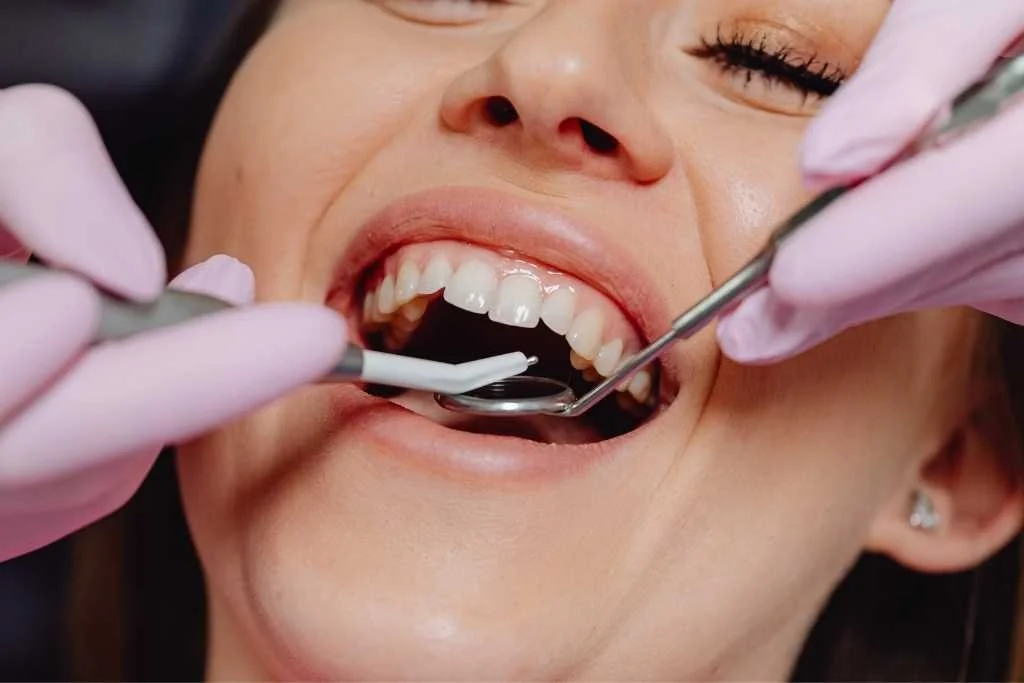The Top Five Causes of Gingival Hyperplasia
What This Blog Post Will Cover
In this article, you’ll learn:
- The five most common causes of gingival hyperplasia
- How systemic and local factors contribute to gum swelling
- Why early diagnosis and laser treatment may improve outcomes
- How Scott Froum, DDS, tailors therapy to support lasting results
Introduction
Gingival hyperplasia, also called gum overgrowth or sometimes “gummy smile”, is a condition where the gums become enlarged and swollen. This can lead to chronic inflammation, discomfort, and difficulty keeping teeth clean. Understanding the causes of gingival hyperplasia helps patients and dental professionals create an effective treatment plan to protect long-term oral health and gum health.
Example of gingival hyperplasia
Close up of gingival hyperplasia
1. Medical Conditions
Certain medical conditions can lead to gingival hyperplasia. Diseases like leukemia, sarcoidosis, or Crohn’s disease can cause gum enlargement through inflammation or cellular overgrowth.
Rare genetic disorders, including hereditary gingival fibromatosis, produce thick fibrotic tissue that starts early in life. These cases highlight the connection between the immune system and the teeth and gums.
When gum changes occur, collaboration between dental and medical providers ensures safe, accurate diagnosis and early care.
2. Medications
Drug-related gum overgrowth is one of the most frequent clinical findings. Common medications linked to overgrowth include:
Calcium channel blockers for high blood pressure
Anticonvulsants like phenytoin
Immunosuppressants like cyclosporine
These drugs can cause gum tissue to thicken as a side effect of their effect on connective tissue. Excellent plaque control and physician collaboration help reduce severity and improve outcomes.How Periodontal Treatment Works
3. Orthodontic Treatment
Orthodontic treatment, including braces or aligners, can make plaque control more difficult. Appliances trap bacteria and increase the risk of periodontal disease. This can lead to temporary gum swelling or inflamed gums, especially around brackets and wires.
With regular professional cleanings, patients can maintain oral health during treatment. Once orthodontics are completed, inflammation usually resolves, restoring healthy tissue.
4. Hormonal and Physiologic Changes
Fluctuations in hormones, especially during pregnancy or puberty, can increase gum sensitivity to plaque. Hormones like estrogen and progesterone change the way blood vessels react, promoting inflammation and soft tissue enlargement.
This “pregnancy-related” gingival overgrowth is often temporary and subsides after hormonal balance returns. Gentle hygiene, scaling, and early care help reduce risk and support gum health during these phases.
5. Poor Oral Hygiene
Poor oral hygiene remains one of the most common causes of gingival hyperplasia. When plaque builds up along the gum line, the body’s immune response causes swelling and thickening. Over time, this can lead to tooth loss, healthy bone deterioration, and lasting changes in gum contour.
To prevent these issues:
Brush your teeth twice daily
Brush or floss daily to remove plaque
Schedule regular cleanings to manage periodontal disease
Good daily care lowers risk factors, balances blood sugar, and supports total oral health.
Key Takeaways
Gingival hyperplasia can be caused by medications, medical diseases, hormones, orthodontics, or hygiene.
Conditions that trigger chronic inflammation increase the risk of gum swelling and tissue thickening.
Gingival hyperplasia treatments may include professional cleaning, medication adjustment, or laser treatment for more advanced cases.
Early evaluation helps protect gum health and maintain your natural smile.
Frequently Asked Questions About Periodontists
-
It’s an enlargement of gum tissue caused by inflammation, medication, or systemic conditions that affect the gums and supporting bone.
-
Yes. Some blood pressure, seizure, and transplant medications can cause gum overgrowth as a side effect.
-
Mild cases often improve with hygiene and nonsurgical therapy. Severe cases may benefit from laser treatment or surgical reshaping.
-
In many cases, yes. Consistent home care, regular visits, and early treatment of periodontal disease can help prevent progression.
About Dr. Scott Froum
Dr. Scott H. Froum is a board-certified periodontist in Midtown Manhattan. He helps patients with gum disease treatment, scaling and root planing, periodontal regeneration, dental implants, and surgical procedures for implant complications.
Dr. Froum is a professor at SUNY Stony Brook Dental School and the chief editor of Perio-Implant Advisory. He has many years of experience saving natural teeth, improving dental health, and supporting patients with advanced treatment planning.
If you are looking for a periodontist in NYC to help you explore the best options for your teeth and gums, Dr. Froum offers expert, patient-centered care. Contact the office today.
Contact Us
Address
1110 2nd Ave Ste 305
New York, NY 10022
Phone
Tel: 212-751-8530
Fax: 212-751-8544
scottfroumdds@gmail.com
Hours
Monday | 9am - 5pm
Tuesday | 9am - 5pm
Wednesday | 9am - 5pm
Thursday | 9am - 5pm
Friday | 9am - 5pm
Saturday | Closed
Sunday | Closed







